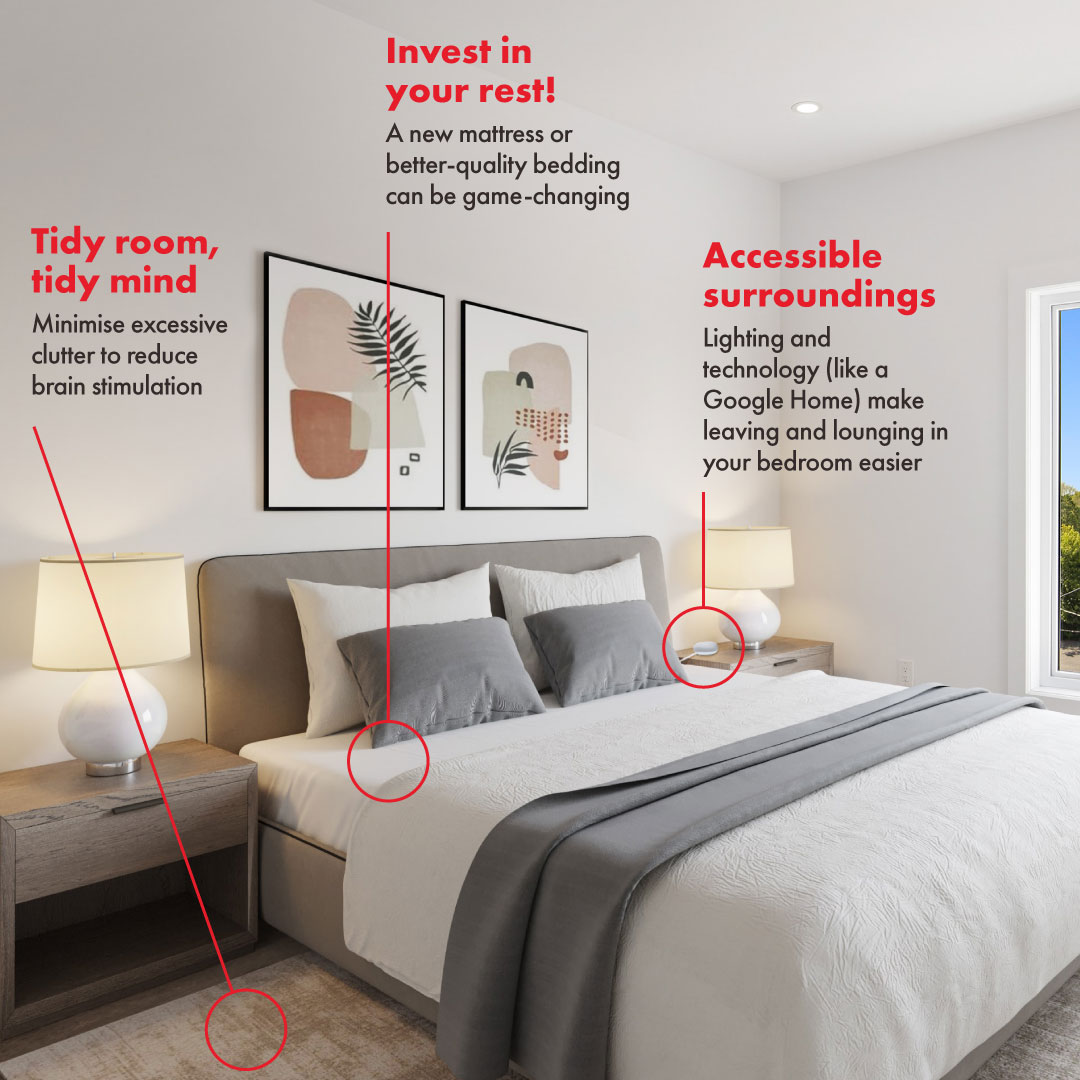 illustration from Independent Living
illustration from Independent Living
Sleep Sanctuary: Crafting a Restful Environment for Optimal Health and Recovery
In today's demanding world, sleep often gets neglected. But prioritizing sleep isn't a luxury—it's essential for your health. Learn how to create a sleep sanctuary in your bedroom for better sleep and overall well-being.
Why is Sleep So Important?
Sleep is an active process where your body and mind restore and repair. Here's why it's vital:
- Physical Repair and Restoration: Repairs tissues, rebuilds muscle, and restores energy. Growth hormone is released during sleep.
- Cognitive Function and Memory Consolidation: Essential for learning, memory, and cognitive performance. The brain processes and consolidates information.
- Immune System Function: Strengthens the immune system. The body produces cytokines to fight infection and inflammation.
- Emotional Regulation: Vital for emotional balance. Sleep deprivation can lead to irritability and mood swings.
- Hormonal Balance: Regulates hormones like cortisol, insulin, ghrelin, and leptin. Disrupted sleep can lead to increased stress and weight gain.
The Pillars of a Sleep Sanctuary
Optimize your bedroom environment to promote relaxation and restful sleep. Here are key elements to consider:
1. Darkness: Mastering Light Control
Light regulates your circadian rhythm. Minimize light exposure, especially blue light from electronic devices.
- Blackout Curtains or Blinds: Block external light sources.
- Eye Mask: Provides a personalized dark environment.
- Minimize Electronic Devices: Avoid smartphones and tablets in bed. Use blue light filters if necessary.
- Red Light Nightlight: Opt for red light as it has the least disruptive effect on melatonin production.
2. Quiet: Minimizing Noise Pollution
Noise can disrupt sleep. Create a quiet environment:
- Earplugs: Block out external noise.
- White Noise Machine or Fan: Masks distracting sounds.
- Soundproof Your Bedroom: Seal cracks, add thick curtains or rugs, and use acoustic panels.
- Communicate with Household Members: Ask for quiet during bedtime hours.
3. Temperature: Finding the Optimal Sleep Temperature
A cool bedroom promotes deeper sleep. Aim for 60-67°F (15.5-19.4°C).
- Thermostat: Set it to a cool temperature.
- Fan or Air Conditioner: Cool down your bedroom quickly.
- Breathable Bedding: Use natural fibers like cotton, linen, or bamboo.
- Warm Bath or Shower: Lower your core body temperature before bed.
4. Comfort: Creating a Cozy and Relaxing Space
A comfortable bed and bedding are essential:
- High-Quality Mattress: Provides adequate support.
- Comfortable Pillows: Support your head and neck.
- Soft and Breathable Bedding: Use natural fibers.
- Clean and Clutter-Free Bedroom: Promotes relaxation.
- Personalize Your Space: Add calming colors, artwork, or plants.
5. Air Quality: Breathing Easy for Better Sleep
Improve air quality for better sleep:
- Air Purifier: Removes allergens and pollutants.
- Ventilate Your Bedroom: Open windows for fresh air.
- Avoid Harsh Chemicals: Use natural cleaning products.
- Consider Houseplants: Snake plants and spider plants can purify the air.
Beyond the Bedroom: Lifestyle Factors for Better Sleep
Lifestyle adjustments to enhance sleep:
- Regular Sleep Schedule: Go to bed and wake up at the same time each day.
- Relaxing Bedtime Routine: Read, take a warm bath, or listen to soothing music.
- Avoid Caffeine and Alcohol: Especially before bed.
- Exercise Regularly: But avoid exercising too close to bedtime.
- Manage Stress: Practice meditation, yoga, or deep breathing.
- Sunlight Exposure: Helps regulate your circadian rhythm.
- CBT-I: Consider Cognitive Behavioral Therapy for Insomnia.
Addressing Specific Sleep Challenges
Common sleep problems and strategies:
- Insomnia: CBT-I, sleep hygiene, and relaxation techniques.
- Sleep Apnea: CPAP therapy, oral appliances, and surgery.
- Restless Legs Syndrome (RLS): Medication, lifestyle changes, and iron supplementation.
- Nightmares: Stress reduction, imagery rehearsal therapy, and medication.
- Snoring: Lifestyle changes and medical devices.
The Long-Term Benefits of a Sleep Sanctuary
Investing in a sleep sanctuary improves your long-term health and well-being:
- Improve Physical Health: Reduce the risk of chronic diseases.
- Enhance Cognitive Function: Improve memory and concentration.
- Boost Immune System: Strengthen your immune system.
- Improve Emotional Well-being: Reduce stress and anxiety.
- Increase Productivity: Improve focus and energy levels.
- Enhance Quality of Life: Experience greater joy and satisfaction.
Ready to Transform Your Sleep?
Start by implementing a few tips from this article. Experiment and track your progress. Creating a restful sleep environment is an ongoing process. Share this article and let us know your favorite sleep-enhancing strategies in the comments!
Published on March 25, 2025
reference: Various Article on internet
Gema
Wordsmith and content writer passionate about creating high-quality content that informs, entertains, and inspires. Let me bring your brand's story to life.
All stories by : Gema

0 Comments